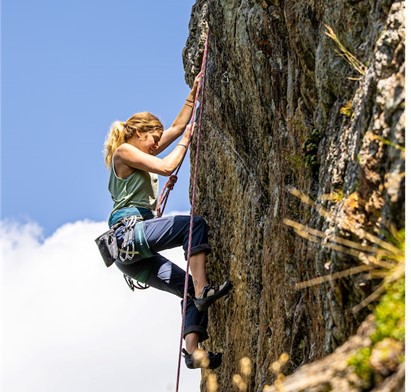Second Nature Utah welcomed Raegan McClymont to their team back in the fall of 2021. As a highly respected member of the crew, Raegan was given the opportunity to transfer into the Family Programming Department, earning her the Parent Coordinator title.
As a coordinator, she is dedicated to providing the highest standard of care to the parents and families of students participating in Second Nature’s wilderness therapy program.
About Raegan McClymont
Growing up in Pennsylvania, Raegan attributes her fondest childhood moments to the nature of the West. She believes her outdoor adventures led to extremely positive personal growth as a young child.
These powerful experiences ultimately led to her achieving an undergraduate degree in Adventure Education. Leadership, communication, and group dynamic skills were all part of the course, alongside learning various outdoor living techniques.
To prove her dedication to the cause, Raegan McClymont even spent a semester studying at the National Outdoor Leadership School. And unsurprisingly, she continued to fall more deeply in love with the West’s stunning nature.
Raegan enjoys snowboarding and rock climbing in her free time and hopes to explore Utah’s ethereal wilderness in the coming year.
From Field Instructor to Parent Coordinator
While conducting extracurricular education at the National Outdoor Leadership School, Raegan heard about Second Nature Utah.
Naturally, the program spoke to her, and she began working as a Field Instructor in late 2021.
Her favorite parts of the job were actively engaging in challenging discussions and developing a deep understanding of the student’s life stories. And, of course, laughing with them daily was thoroughly rewarding.
However, as January 2022 rolled around, Raegan transferred to the Family Programming Department, becoming Parent Coordinator.
The Parent Coordinator Role
As Parent Coordinator, Raegan helps to welcome new families to Second Nature and introduces them to their new resources. Raegan also helps to facilitate parent day and overnight visits as well as the Second Nature family Intensive program.
She provides high-quality, sensitive care to parents and the rest of the students’ families, ensuring everybody progresses toward the same goal.
Her role can be boiled down to two main factors — communication and connection.
While the adolescent is the individual receiving the wilderness therapy, the entire experience becomes a vessel for family intimacy and cohesion.
The Parent Coordinator and other staff members facilitate communication as the initial step in reconnecting family units. Both after and during the program, parents and students report feeling closer, thanks to the continued efforts of the new Parent Coordinator, Educators, Therapists, and Field Instructors.
Raegan ensures ultimate efficacy by coordinating parents’ visits with the rest of the team, ensuring the students are informed of their arrival and are comfortable with their progress.
She works closely with the whole group as well as individually with parents for an all-encompassing view of the situation.
It seems Raegan’s experience as a Field Instructor has stood her in great stead for the sometimes-demanding yet always-rewarding role of Parent Coordinator.
The future is bright for Raegan McClymont, Second Nature’s newest Parent Coordinator, and all the families lucky enough to meet her.







